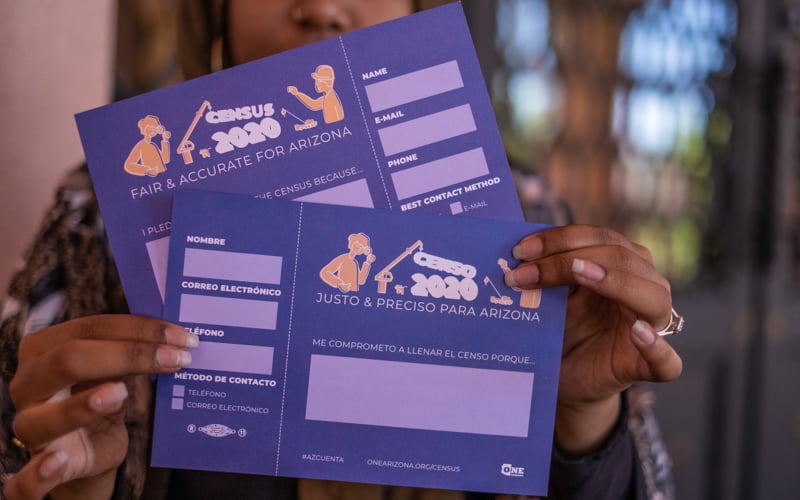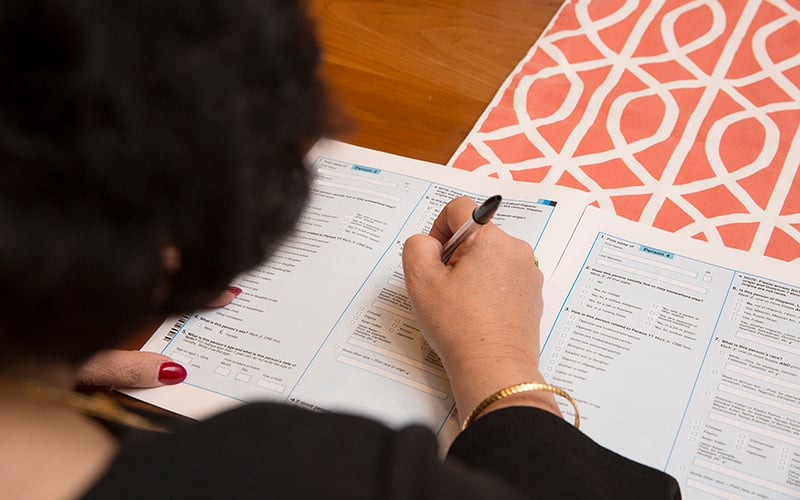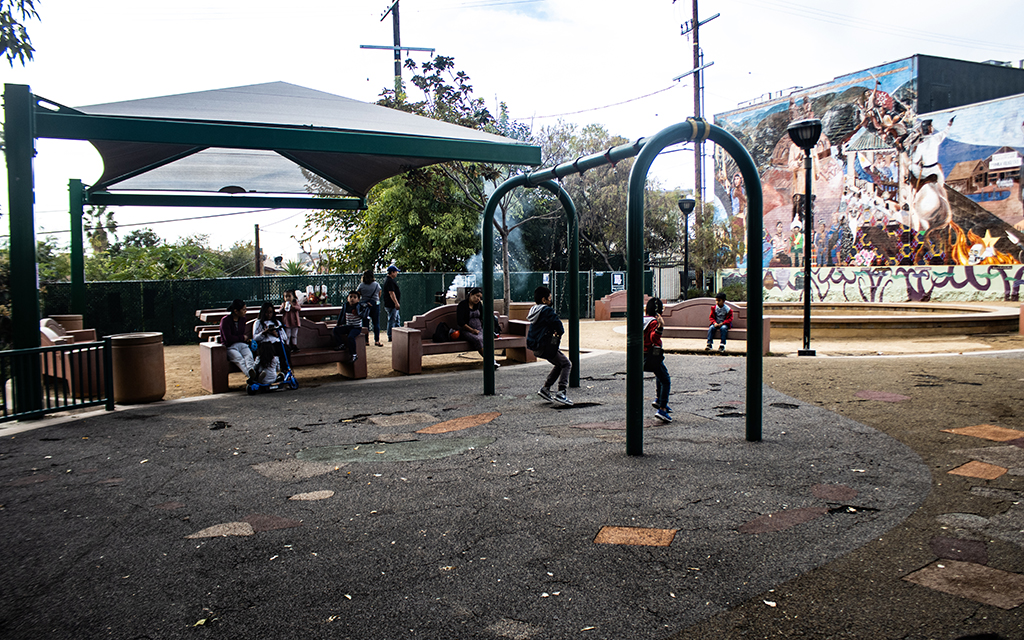
The Census Bureau may change how it asks about race and ethnicity, a shift that could end what one advocate called the “painful irony” of Native Americans, Latinos and those of Middle Eastern or North African descent having to identify as white or “other.” (File photo by Scott Dalton/U.S. Census Bureau)
WASHINGTON – Corey Saylor calls it the “painful irony” that Americans of Middle Eastern or North African descent face when filling out government forms.
Even though they are often “targeted because of the way they look and because of where they come from,” they have to identify as white because there is no other option, said Saylor, the research and advocacy director of Council on American-Islamic Relations.
That could change if the Census Bureau follows through on plans to overhaul the way it asks people about their race and ethnicity. It would be the first such change since 1997 to the government’s Standards for Maintaining, Collecting, and Presenting Federal Data on Race and Ethnicity – or SPD 15 standards.
The proposal, first unveiled in January, would make a number of changes: Combining separate questions on race and ethnicity into one, removing the words “majority” and “minority,” altering the definitions of American Indian or Alaska Native and other categories, and adding MENA – for Middle Eastern or North African.
Karen Battle, the chief of the Census Bureau’s population division, said at a March hearing on the proposal that it is intended to “ensure that all people are able to identify themselves within one or more of the minimum categories, that the minimum and detailed categories reflect meaningful and easy to understand distinctions.”

A plan to include include a category for people from the Middle East and North Africa on the 2020 census was scrapped by the Trump administration. The bureau is reconsidering the plan. (File photo by Chloe Jones/Cronkite News)
For Usama Shami, president of the Islamic Community Center of Phoenix, the change would mean that members of Middle Eastern communities would no longer have to identify on Census forms as “some other race” or as white – an option they “still haven’t seen any advantage” from.
“The issues … that’s important to them (whites) is not important to me, so why should I be lumped with that group?” Shami asked. “This is the disadvantage of not having a separate category because the government doesn’t know what laws or programs should be passed.”
Shami and others say the change is more than just about being seen by the government and creating greater acceptance for communities of color. Census data also plays a key role in distribution of federal funding and desperately needed federal programming, as well as giving underrepresented communities more say in the political process through redistricting and elections.
Under the current rules, advocates said a variety of groups select “other” on Census forms because they do not identify with the options provided. That is particularly true for members of the Latino and MENA communities, they say, and particularly damaging.
This is why the Census needs to do more to make its survey questions more inclusive, and therefore accurate, said Diana Elliott, the vice president for U.S. programs at the Population Reference Bureau. The application of federal data into resources “becomes a question of fairness and distribution,” she said.
“If you’re undercounting a population that lives together in the same community, and that community then relies on federal funding for various reasons – like its schools, or its roads, its infrastructure – that community gets less money over the next decade,” said Elliott, who has written about problems with the 2020 census.
“Affluent, white, older communities tend to be overcounted, so that means that they’re getting more money relative to communities that are undercounted,” she said.
When it comes to redistricting, she said, “politics are unfortunately involved… But it does help to have data at least that are thorough, that you can sort of, you know, use to enforce some of these federally mandated policies.”
“It’s really important that people are represented by people who are like their community,” Elliott said.
But some worry that the changes could make the data less, not more, reliable.
Monica Villalobos, the president of the Arizona Hispanic Chamber of Commerce, said distinguishing race and ethnicity has always been “confusing” for the Latino community because “Hispanics can be of any race.” Despite this, she thinks it is essential to keep the questions separate in order for data collection to be accurate.
“This is going to have a different metric and you won’t have the trend data that you’ve had over the last census, when you have the questions structured the way that they were,” Villalobos said. “So you’re going to see some really wonky data come out of this.”
Claudia Ruiz, the senior civil rights analyst at UnidosUS, disagrees.
She said that while it is important to distinguish ethnicity and race, the separate-question format is “clearly not working.” Ruiz cited Census research that found fewer people selected the “other” category when presented with a combined race and ethnicity question.
“The way that the question is currently formatted clearly doesn’t work for anybody, right?” Ruiz said. “If Latinos are being erased altogether, and as many as 40% are choosing some other race, that presents more of a roadblock to actually achieving sort of equitable and fair implementation of programs and policies.”

Advocates say the current Census Bureau questions on race and ethnicity are too limiting and force many Americans to identify as something they are not – or as “other.” (File photo by Marianne Lee Photography/U.S. Census Bureau)
Under the proposed changes, Native Americans and Alaskan Natives would be able to claim their tribal heritage without affirming that they “maintain tribal affiliation or community attachment.” The Census proposed removing those words from the subcategory definition in order to be “consistent with all minimum categories” for other races.
Vanessa Fonseca-Chávez, an associate professor of English at Arizona State University, said that while Indigenous respondents cannot claim benefits unless they are enrolled members of a tribe, there is a lot at stake for the tribes themselves as “the government gets to decide whether or not Indigenous people are worthy of recognition.”
Due to mixed identities – along with the fact that the Census has no responsibility to check whether respondents are official members of a federally recognized tribe – the allocation of resources could become more complicated, said Fonseca-Chávez, who researches colonialism in the Southwest. But she thinks the proposed change is well-intentioned.
“There has to be a way to account for people’s multiple identities, because I do think that it has a very strong bearing on the way that people see themselves and the way that they are perceived,” said Fonseca-Chávez, who is also an associate dean of diversity, equity and inclusion for ASU’s College of Integrative Sciences and Arts.
“If we’re not able to account for those complexities in identity, then it’s much harder to be able to serve that population at the end of the day,” she said.
Saylor, of CAIR, said the proposed racial category for Middle Easterners and North Africans shows America is changing its attitudes after decades of discrimination following the 9/11 attacks. But he said the new category could also help the group get recognition when measuring hate crimes across the country.
“There’s a further expansion here, that now not only can you talk about it (discrimination), but you can now celebrate your background from the Middle East and North Africa, instead of feeling like you have to hide it because that might get you targeted by the authorities,” Saylor said.
The public comment period on the proposed changes closed at the end of April, and the Census Bureau is now reviewing those with an eye toward having final regulations in place by summer 2024.
Ruiz and other advocates said the proposal shows good intentions from the Census, but note that the bureau will need to listen to a variety of feedback in order to ensure the survey serves all communities well.
There is a lot at stake, she said: If done right, the change could impact not only the next decennial census, but the visibility of generations to come as the country becomes increasingly diverse.
“Our populations are growing at such a rapid rate, they’re evolving in very complex ways,” Ruiz said. “The ways in which we collect and report on that data should at least be able to keep pace … with the changing dynamics and evolving dynamics of our cultural identities.”


